May 15, 2022
Coursera: ML03-深度学习
深度学习
Machine Learning - Android Ng
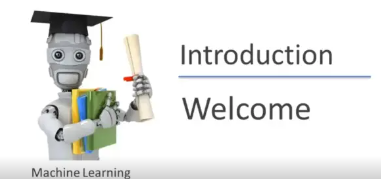
3.1. 神经网络概论
尝试模仿(mimic)人脑
用处
- speech -> images -> text(NLP) -> …
每个神经元接受一些输入,做一些计算,然后将输出送给下一个神经元
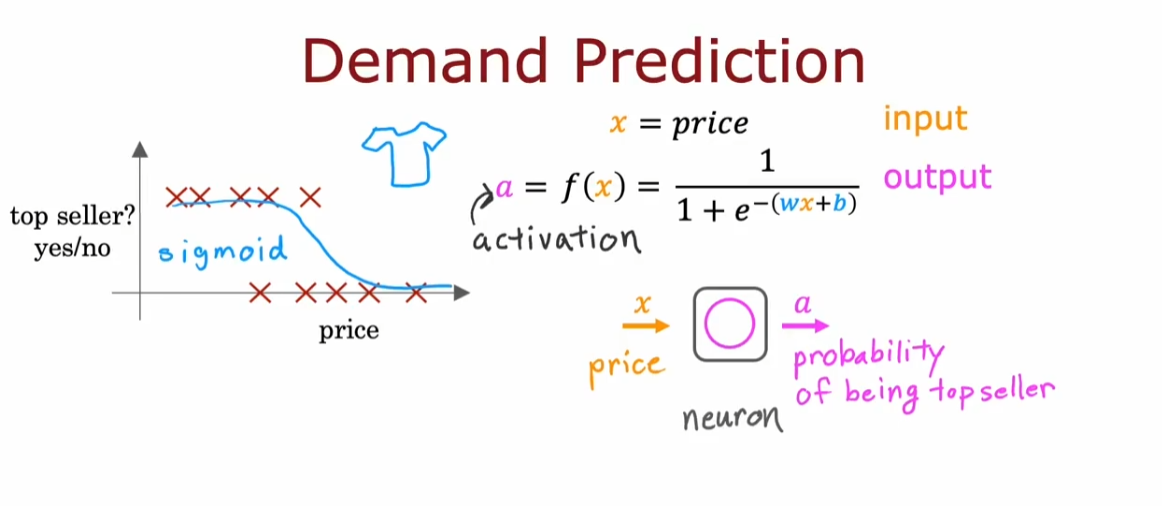
- 可以将神经元分为不同层(layer),每层接受相似的输入,输出不同的结果
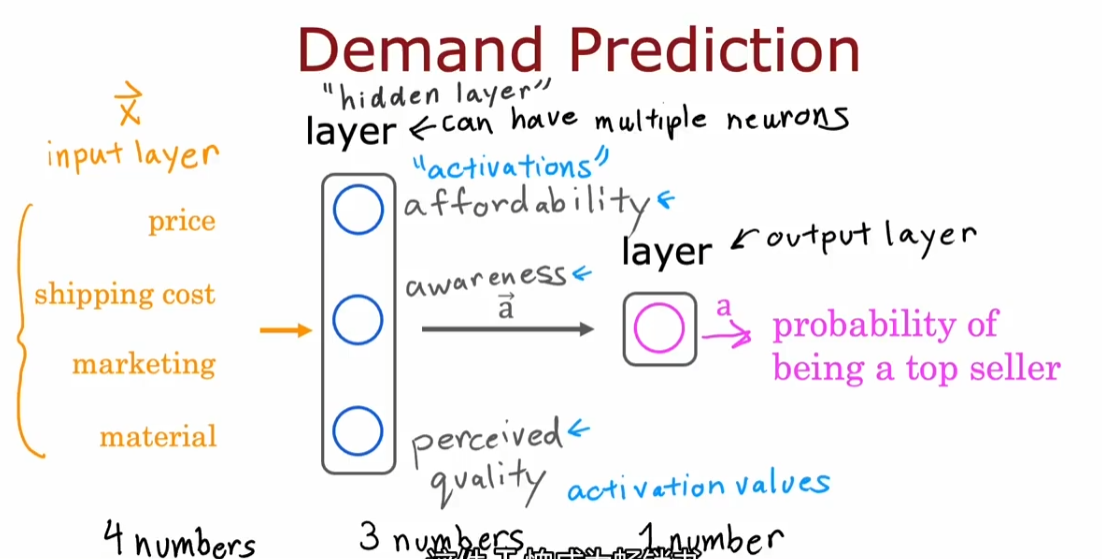
神经网络不需要自己进行特征工程,中间的隐藏层即通过输入初始特征来输出更好的特征
需要自己决定的是神经网络的架构:即有多少层,每层有多少神经元
3.1.1. 一些 notation
- 方括号上标代表第 x 层
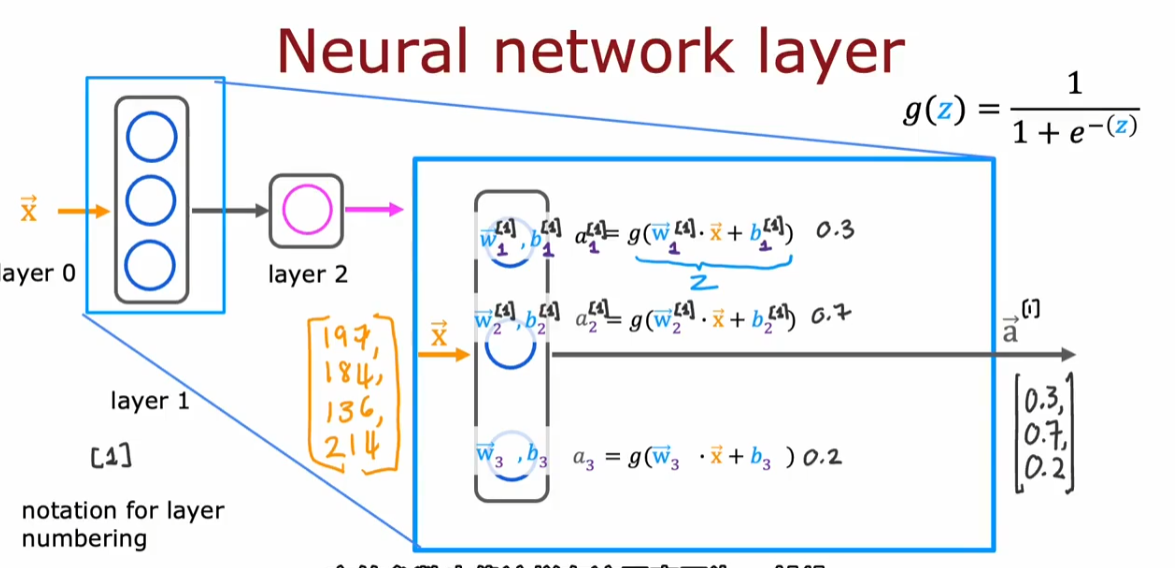
- 每层接受的输入向量上标是上一层的
- $a^{[0]}$一般表示输入向量
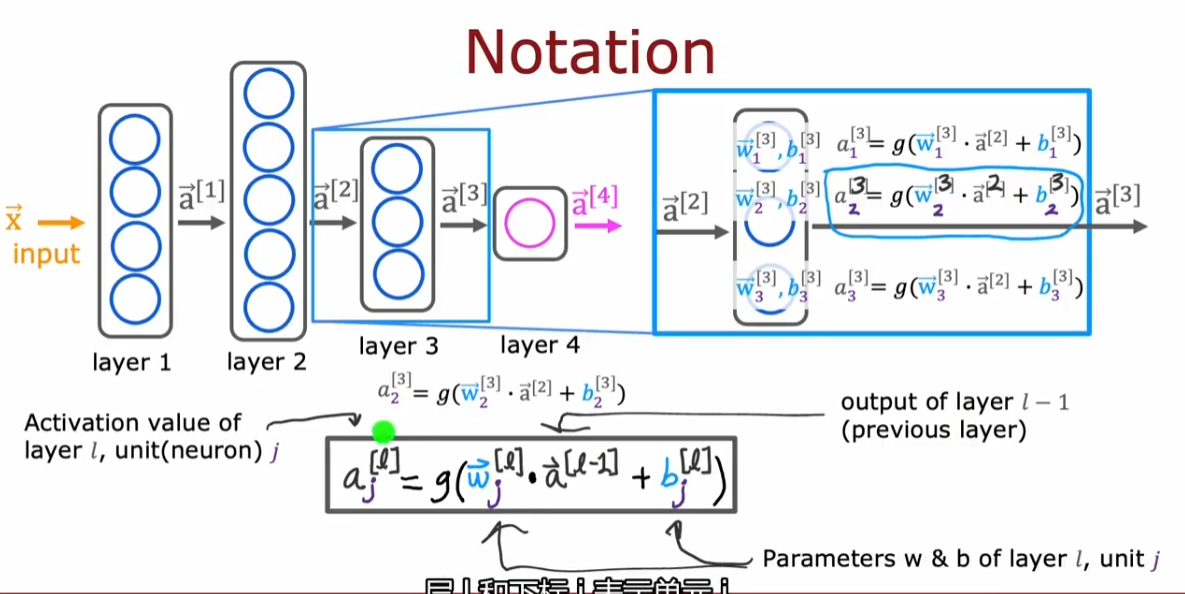
3.1.2. forward propagation
- 前向传播
- 从神经网络层自左向右传播
3.2. TensorFlow 介绍
3.2.1. Demo
x = np.array([[200.0, 17.0]]) |
3.2.2. Tf 的数据格式

3.2.3. Tensor(张量)
- 可以近似理解为一种矩阵
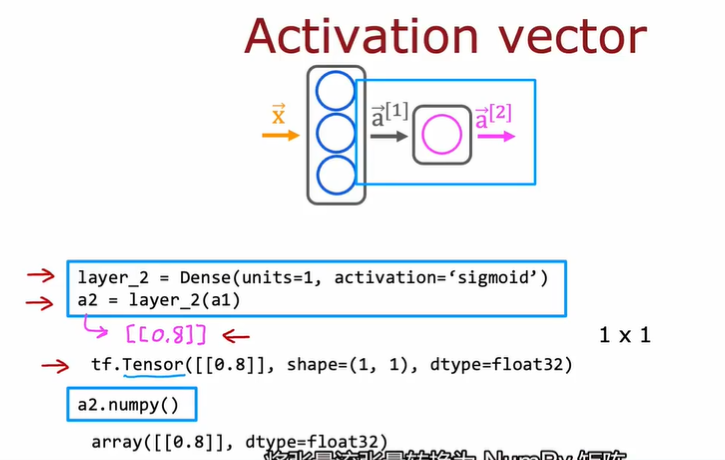
3.3. Python 向前传播的原理
- forward prop
- 手写全连接层(full connected)
def dense(a_in, W, b, g): |
3.4. AI 和神经网络的关系
3.4.1. ANI 和 AGI
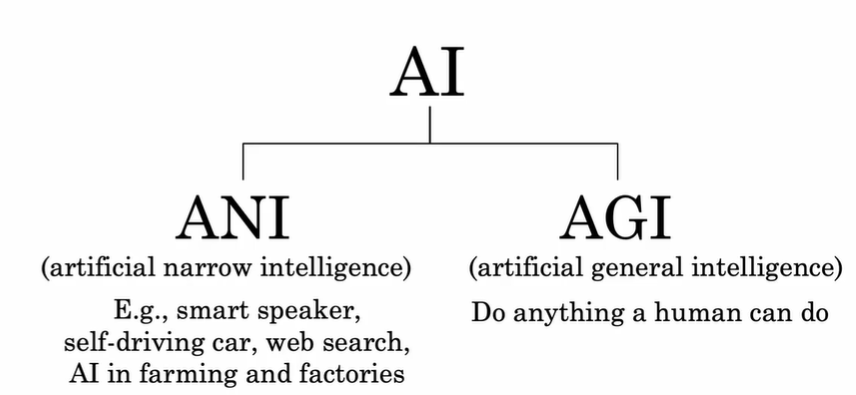
3.4.2. The “one learning algorithm” hypothesis
科学家发现人脑的可塑性非常强:非常小的一片人脑区域就能做很多事情,比如当把图像输给听觉区域时,听觉区域又会学会识别图像。这带来一个假设:存在一种或几种算法,可以使得机器学习/神经网络实现非常多的事情
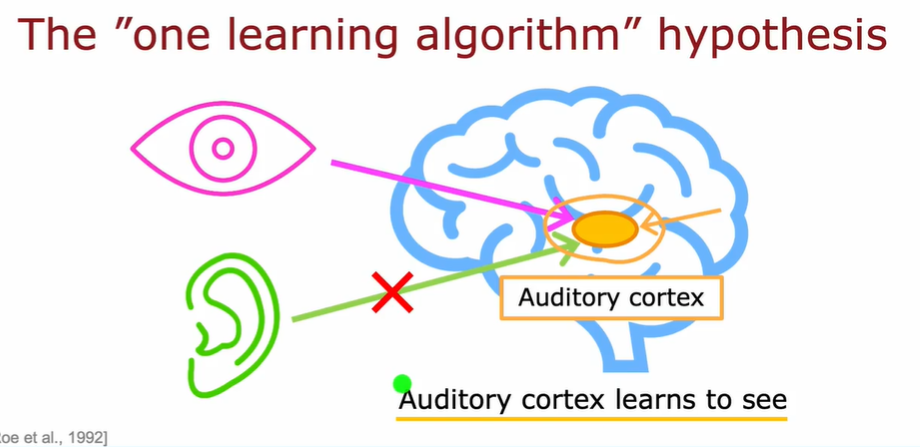
3.5. 算法中的向量化实现
X = np.array([[200, 17]]) |

使用矩阵和向量运算的好处是:可以利用硬件进行并行计算,显著提高运算速度
在 TensorFlow 的约定中:一个样本的数据通常在矩阵的行中
3.6. TensorFlow 实现
- tf 编译模型的关键是定义损失函数
- 第一步:定义模型
- 第二步:使用损失函数编译模型
- 第三步:训练模型
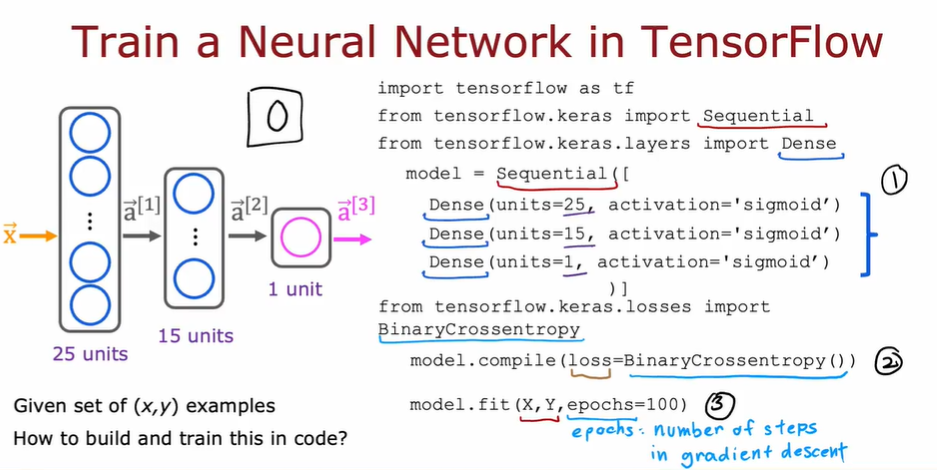
3.6.1. 前述基本步骤在 tf 中的对应
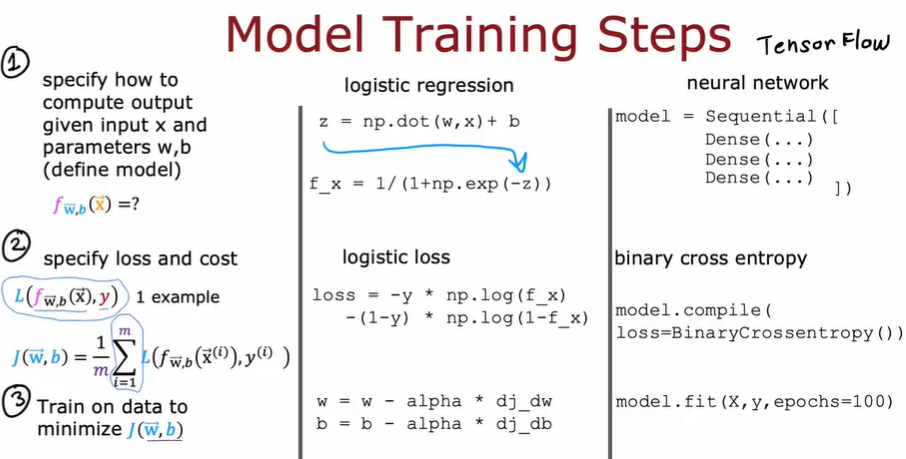
- tf 的 model.fi 通过反向传播实现了梯度下降
3.7. 激活函数详解
- 一些激活函数
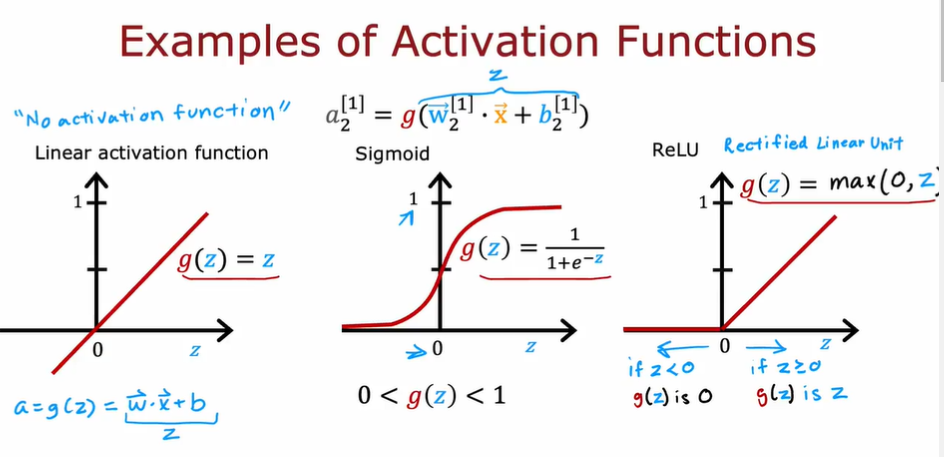
3.7.1. ReLU
- Rectified Linear Unit 修正线性单元
- 计算速度比 sigmoid 更快
- 只有左端是趋于 flat 的,因此在梯度下降时比 sigmoid 更有优势,学习速度更快
- 一般作为隐藏层的默认激活函数

3.7.2. softmax
- 逻辑回归的泛化
- 针对多分类环境
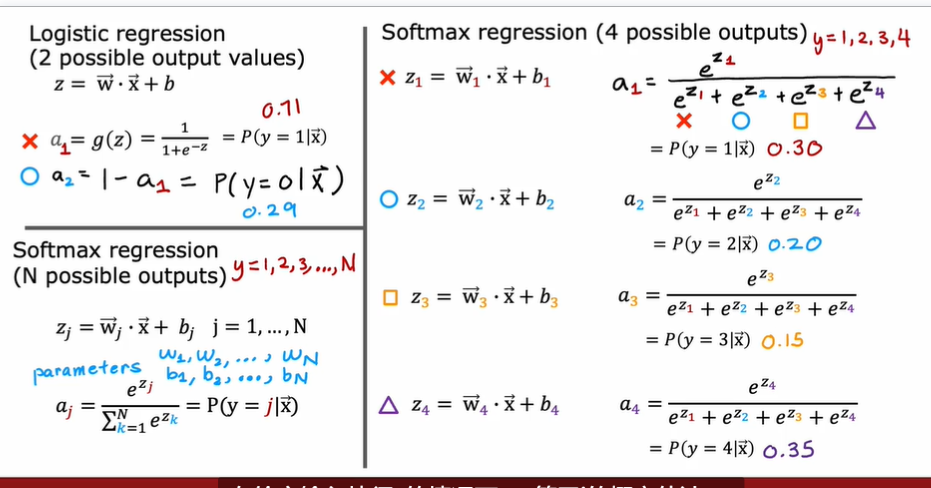
3.7.2.1. softmax 函数的损失函数
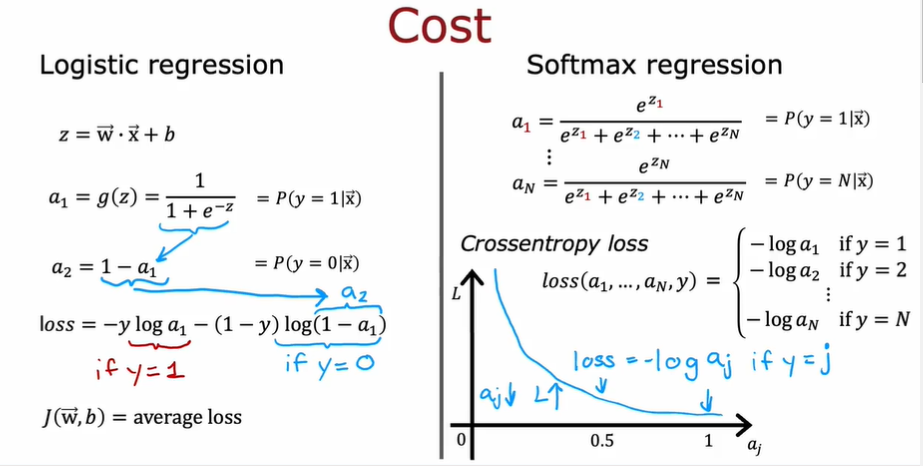
- 可以和 sigmoid 类比,$a_j$越接近 1,损失越小,这会刺激$a_j$不断接近 1
3.7.3. 如何选择激活函数
- sigmoid:二元分类问题,因为神经网络在学习 y=1 的概率
- linear:回归
- ReLU:回归,且结果是非负值
3.7.4. 为什么我们需要激活函数
- 简单来说,如果我们不使用激活函数,那么所有神经网络将变成如同线性回归般的简单计算。多层神经网络不能提供提升计算复杂特征的能力,也不能学习任何比线性函数更复杂的东西,违背了我们创造神经网络的初衷
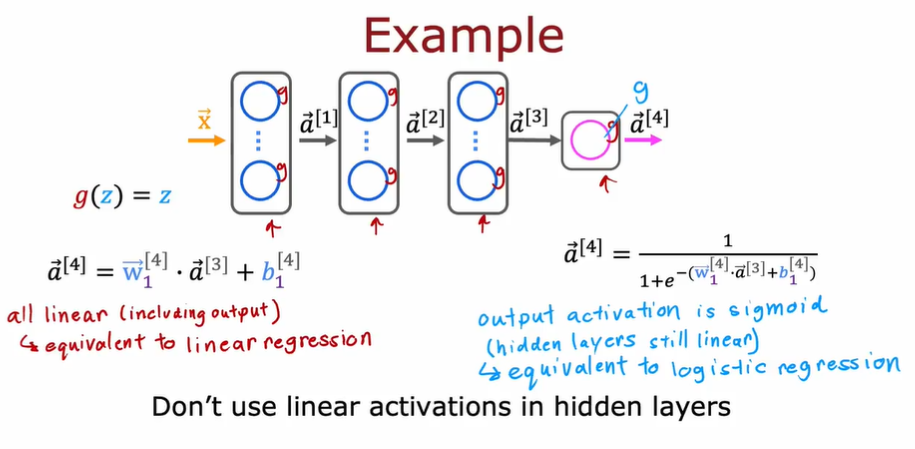

3.8. 多分类
- y 是离散的,且可能的取值大于 2 种
- 使用 softmax 激活函数
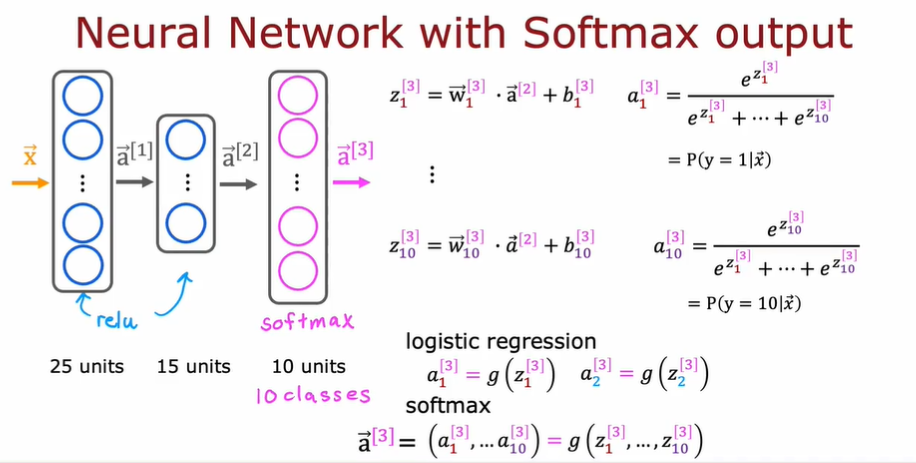
- softmax 函数在这里和其他激活函数的区别是,softmax 函数一次性算出$a_1, a_2, …, a_i$的所有值,并计算出它们的概率。而其他激活函数仅仅只是一次计算出一个。
3.8.1. 使用 tf 实现

- 一种 tf 实现的版本,但是实际上有更好的版本。因此
3.8.1.1. 优化计算精度
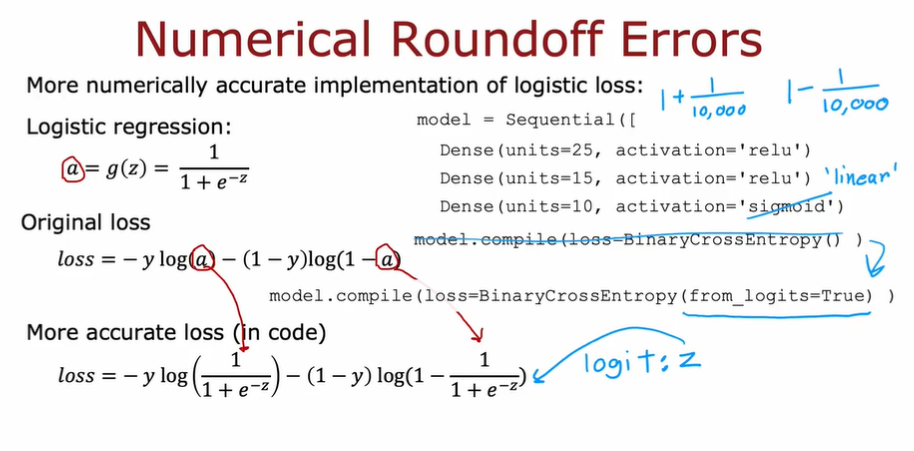
- 在输出层使用 linear 激活函数(目的是为了不先计算 a/z,而是把整个式子放到最后再统一计算,避免了计算中间值而带来的精度误差),然后在 compile 选项里加上
from_logits=True
3.8.2. 多标签分类问题
- multi-label classification problem
- 输出是一个标签向量,表示是否包含某个向量

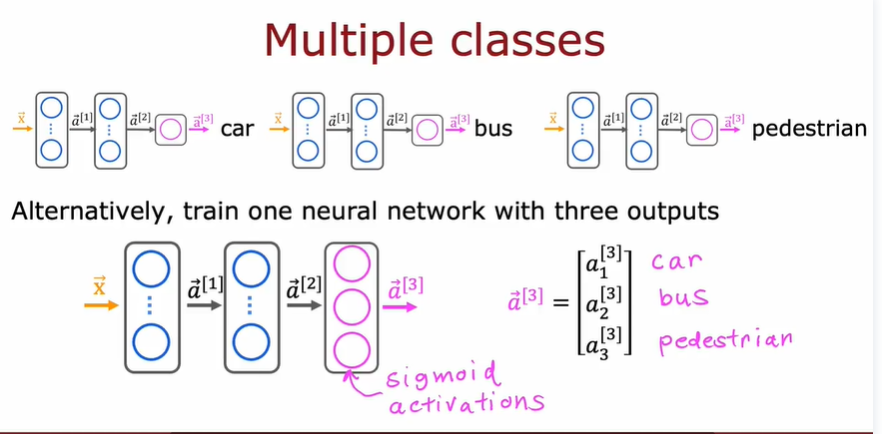
3.9. Adam 算法
Adaptive Moment estimation,自适应矩估计
可以自动调整学习率$\alpha$
对于不同模型使用不同$\alpha$
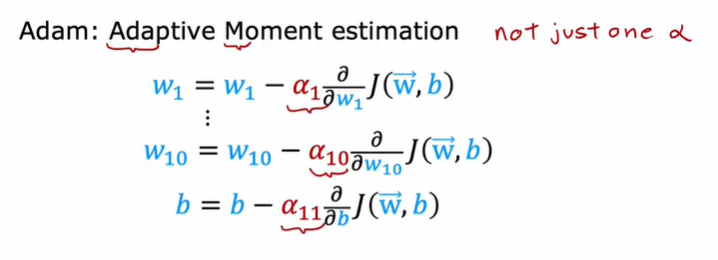
3.9.1. 使用
model = Sequential([ |
在 compile 里面加一个优化器参数即可,然后设置一个默认的学习率
3.10. Layer Types
3.10.1. Dense layer
全连接层,接受前一层的所有激活,然后通过一个激活函数得到它自己的输出
3.10.2. Convolutional Layer
卷积层
每一个神经元只关注**part of**前一层的输出
优点:
- 计算更快
- 所需的训练数据更少,也更不容易过拟合
例子
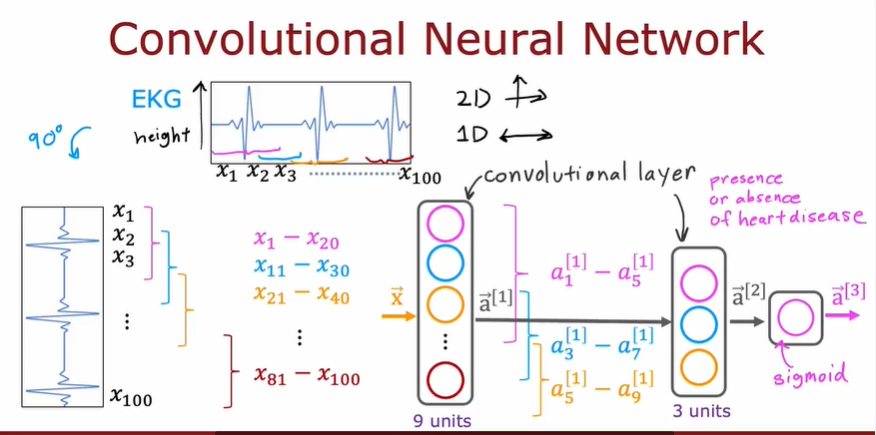
可选择参数:每层的神经元数,每个神经元得到的输入数量